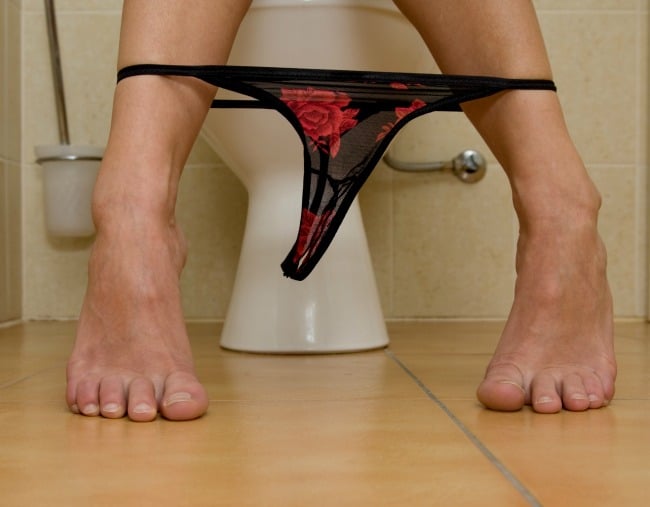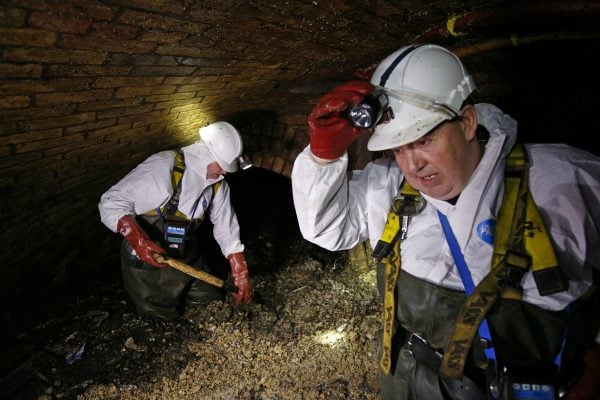
They’re big. They’re smelly. They’re disgusting. Giant, oozing monsters lurking beneath our feet. And it’s all our fault, people. We did this. We created… the fatbergs.
If you’ve not yet had the distinct displeasure of learning about this modern phenomenon, a fatberg is a congealed mass that forms in sewage systems when we flush/tip products we shouldn’t down the toilet or drain.
Speaking to Mamamia‘s daily podcast, The Quicky, Michelle Cull of Queensland Urban Utilities explained that fatbergs consist mostly of cooking oils that people have poured down the sink.
Listen to Mamamia’s daily news podcast The Quicky. Post continues after audio.
“Once [oils] get into the sewer network, they cool down and they solidify and they meet up with other nasties that people have flushed down the loo, such as wet wipes and cotton buds, tampons, even nappies,” she said. “You’d be surprised at some of the things that people flush.”
Fatbergs were first reported around 2013, and have fast become the bane of water boards around the world.
One was discovered in the sewers beneath London in 2017 that was the weight of 11 double-decker buses and the length of two football fields. Meanwhile, Queensland Urban Utilities is reporting that they’ve recently cleared roughly 360 fatbergs in and around Brisbane alone – the largest, a seven-metre monster, had to be removed via crane.
How can we prevent fatbergs?
It’s pretty simple, Cull said.
“We do encourage everyone of course to only flush the three p’s: pee, poo and paper. And of course, not to put those cooking oils down the sink,” she said.
Your actions have an impact on the #environment.
A 64 metre #fatberg has been found by @SouthWestWater before it reached the nearby #Sidmouth beach #Devon.
Please don’t pour fats, oil or grease down the sink, or use the loo as a bin. #Binit4Beacheshttps://t.co/T2wapJN1Gd pic.twitter.com/MypnpWB3Qw
— Environment Agency (@EnvAgency) January 8, 2019


Top Comments
Yes! Again, never flush those wipes that say they're "flushable," but are not! I commented on this the other day and luckily here is a PSA.
We need more of these to alert people to what's happening with these these wipes; keep in mind they could clog the pipes of your house too.
As the article states, it's extremely important not to put grease or oils down the drain. This ignorance or carelessness will end up costing all of us eventually.
I feel sorry for the brave men that have to clean up those disgusting fatbergs. Thanks guys, I hope you stay safe and make a lot of money. (Tip: you should probably be wearing at least masks. I find it kind of unbelievable that you're not.)
I can't look at this Dickensian horror. Won't someone get those sewer workers full face masks?
"There's a stench down here that'll outlast religion." Kenny, 2006.
I think that was the great advantage of being a coal miner in the Dickens era - you can't actually smell anything.
Lookshury, when I was a child you couldna see a thing.
Because they've been dead for 150 years?